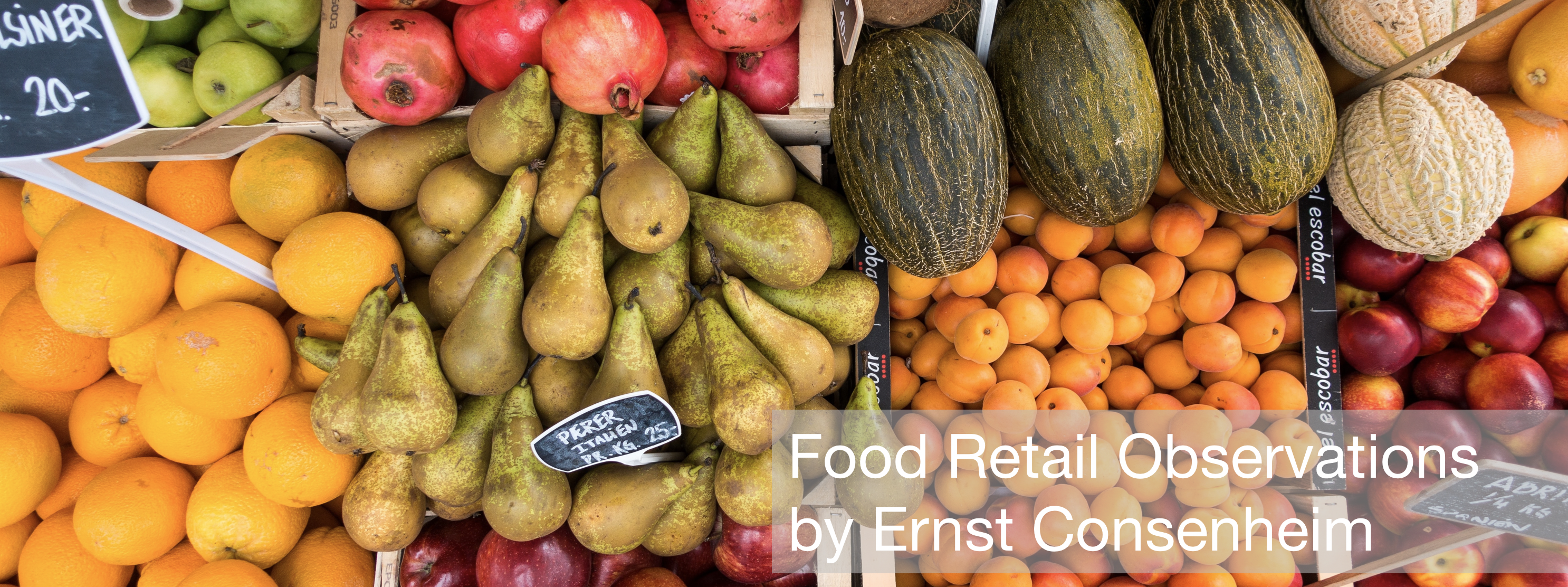
Food retail observations by Ernst Consenheim
Faltering track records
Besides the dramatic impact of the COVID-19 and all the turbulence the virus has brought, we can see that the retail market has transformed in the last decade at a higher pace than the 50 years before that. For many decades the ‘one stop shop’ retail phenomenon proofed its success by enabling people to do their food shopping in an efficient and convenient way. In general the mid-classes all over the world were attracted by the ‘organized retail’ to choose the hypermarkets and supermarkets as their preferred channel for buying their groceries. Up to the previous decade the organised retail evolved from ‘one stop shop’ distributors of products - enabling access and efficiency - to retail brands appealing to people who identify themselves with a specific lifestyle, for example by creating a pleasant store experience. These retailers became store brands that aimed for loyalty and connection with their customer target group.
In the last decade this evolutionary process has accelerated in an extreme pace, causing huge disruptions in the playfield of food retail. In saturated markets successful players managed to drive the ‘wheel of retail’ by boosting the volumes with a low margin business model. To secure the required margin level they invested in private label development. The leaders in the market even managed to combine private label and food innovation programs, showing excellence and leadership to ‘build’ the market responding to tangible and unconscious consumer needs. However their track records have started to falter bit by bit due to a few global fundamental disruptions in the market.
Lowest price
The hard and soft discount food retailers have proven their capabilities to optimize their business models driven by the smartest private label ranges, extremely high volumes and excellence in operational efficiency. They manage to exceed the customer’s expectations by offering a proposition of ‘surprisingly good taste for a price lower than expected’. They even have aligned the efficient and pleasant store experience to proof their proposition.
Convenience
Hand in hand with the digital integration people ‘drown’ in all their too many choices they have to make each day. They struggle to find the right balance in their daily routines between what they ‘must’ do and what they ‘want’ to do. Nowadays people expect that brands show an open eye for this struggle in the daily routines and that they offer help by making life easy and enjoyable. Successful retail brands have responded to these demands with an omni channel proposition and a multi format strategy store portfolio. Mass scale ‘one size fits all’ retail strategies no longer work.
Online
Digital is integrated in all our lives and and we consider our smartphone as the remote control to organise our daily lives. On the one hand physical stores have lost a share in the market to online channels. On the other hand the digital integration is driving the necessity of a ‘phygital’ brand and market approach. This means creating the best combination of physical and digital touchpoints with the consumer in the store, around the store, on the go, at work and at home. No longer can retail focus only on the ‘physical shopping trip’, but the complete customer journey needs to be considered, before, during, after the shopping trip. Part of this shifted retail paradigm is the shift from the store as sales channel to a communication channel. So called: “Stores as media”.
"Coolness"
In the mentioned struggle to find the right balance between ‘must’ and ‘want, people long for trusted lifestyle curators. Identifying themselves with brands that they consider as ‘cool’, because they inspire in an authentic interactive way. To respond to this need, retail brands must reshape their store formats to brand platforms and create a deeper connection with their customer target group.
